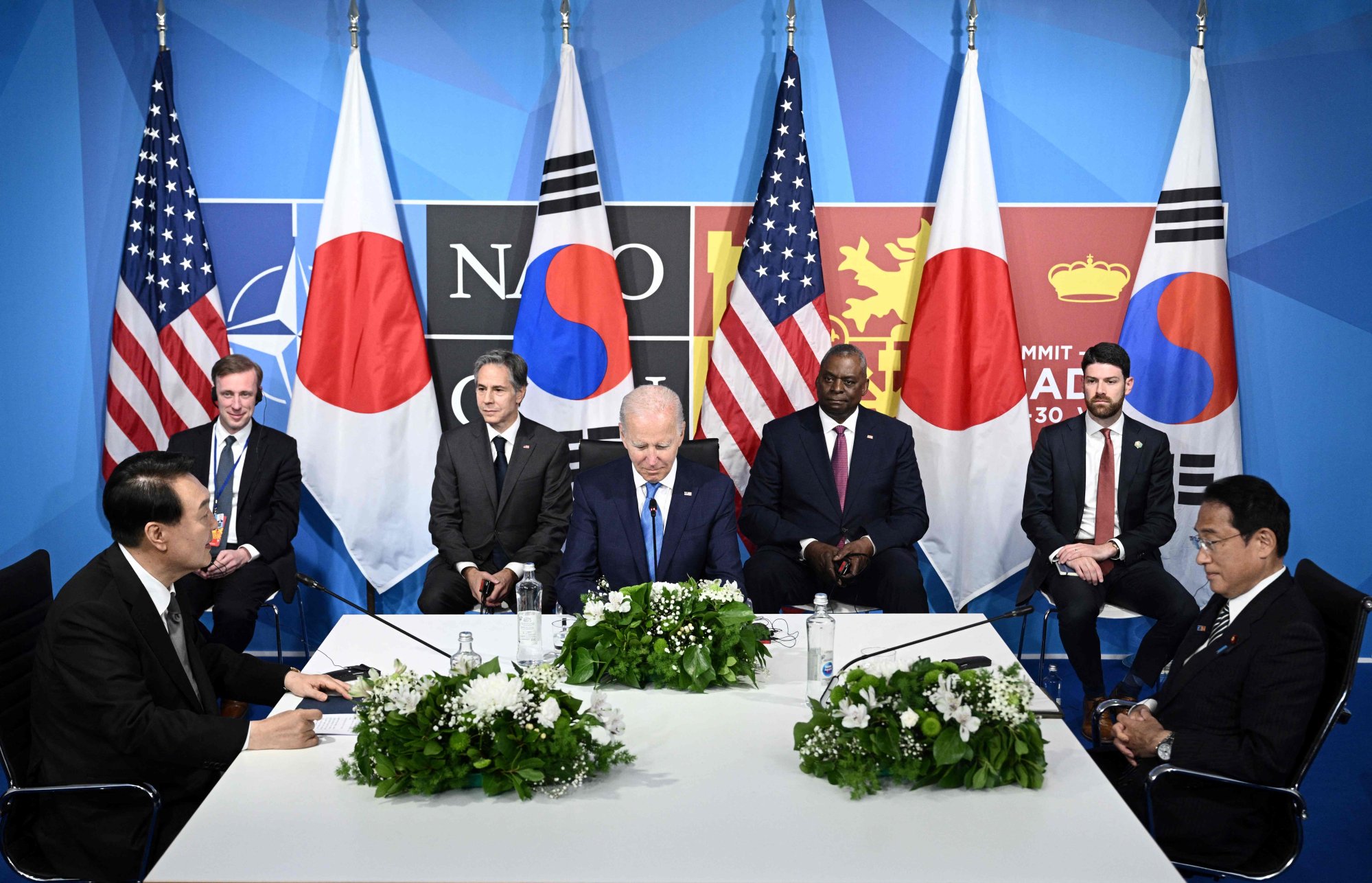
How Nato’s stance on China has changed, and why it matters
- Throughout Nato’s history, China has been both adversary and ally, but never before has it been so high up on the organisation’s agenda
- While the alliance’s focus remains on Europe, China’s relationship with Russia means that security in the Indo-Pacific and Euro-Atlantic are now far more closely intertwined
Against the backdrop of the war in Ukraine and growing global economic, social and geopolitical uncertainty, one particular item on Nato’s agenda has gained importance: how to respond to the security challenges posed by China.
From a historical perspective, China has been viewed as an adversary, an ally and something in-between, depending on developments during the Cold War and after the fall of the Berlin Wall.
Times have changed. In the 1950s, China was described as a “junior partner in an axis” within the Soviet Bloc and, in the 1970s, as potentially “one of the most important Nato allies”. Now, Nato’s understanding of China has shifted significantly in its latest strategic concept, which provides a road map for the alliance for the coming decade.
This deviation was first signalled in the 2019 London Declaration, where China was described as a power that represented “both opportunities and challenges”. Secretary General Jens Stoltenberg followed up the discussion by asking an expert group to prepare ideas on the alliance’s future priorities and concerns.
However, the 2021 communique remained vague on the question of how Nato should respond. This question was given an answer at the Madrid summit, with a balanced though assertive approach to China in the alliance’s strategy.

The strategic concept outlines three elements that are key for Nato-China relations. First, it identifies Russia as “the most significant and direct threat to allies’ security”, affirming that the priority for Nato is responding to the threat to collective security posed by Russia.
This implies that China does not represent the same kind of threat, certainly not in a traditional military sense. Indeed, Nato remains “open to constructive engagement” with Beijing. But it also highlights the challenges Beijing poses to Euro-Atlantic security.
Second, the strategic concept stresses that the European Union is an “essential partner” and calls for the strengthening of EU-Nato cooperation on issues of common interest, including the challenges posed by China.
This resonates with the EU’s Strategic Compass, the group’s version of a national defence strategy, which also emphasises the unity between the two organisations on European and global security.
It is precisely in these fields where the EU’s know-how could make a difference in addressing Beijing’s cyber operations, investments in critical infrastructure, and disinformation campaigns. After all, Nato is a military alliance and the EU is better equipped to manage non-traditional military threats vis-à-vis China.
The main threat derives from Russia but Nato is looking at security from a global viewpoint. This implies that exogenous factors are likely to have a growing impact in the Euro-Atlantic region and that Nato will have to adapt to unfamiliar dynamics.

The transatlantic community gathered in Madrid to set the course for Nato’s future. The strategic concept was influenced by the reality in which we find ourselves regarding Russia’s invasion of Ukraine.
China is, for the first time, featured in Nato’s strategic concept. Certainly, Nato has been cautious by choosing to not raise China to Russia’s level on its threat assessment.
Nato’s sabre rattling over China will only increase tensions
Nevertheless, one of the key long-term issues on its “watch list” is going to be the Beijing-Moscow axis, as it represents a threat to Nato’s values and interests. These circumstances underscore the role of the organisation’s Indo-Pacific partners despite the prioritisation of collective defence for Europe.
The global balance of power is shifting to the Indo-Pacific, and the Euro-Atlantic is working to catch up with it. Where the two sides meet is yet to be seen, but China might give us some clues. In the meantime, the Madrid Strategic Concept is the reference for understanding the alliance’s adjustment to an era of great power competition.
Patrizia Cogo is a communications officer and research assistant at the EsadeGeo Center for Global Economy and Geopolitics, Barcelona, Spain


